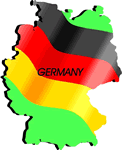
Grades 6-8, 9-12
Happy EconEdMonth! Celebrate economics all month long by visiting EconEdMonth.org

Don't have an account yet? Sign up for free
Don't have an account yet? Sign up for free

Students research the economic systems of a communist country and a third-world country and compare them to the US, guided by questions and using information from the CIA World Factbook website.
What would life be like in the North Korean economy? How would things be different in the economy of Chad? In this lesson, you will have the opportunity to compare these two economies to the U.S. economy, and you’ll practice using some tools that can help you to study any economy in the world.
 First we need to take a moment to look at how economists categorize economies. A market economy is characterized by private ownership of the means of production (for example, farms and factories), and supply and demand are responsible for the price and allocation decisions. The United States, Hong Kong, and Germany are considered market economies. A command economy is characterized by government (or central) control ownership of the means of production, and with a central authority setting prices of goods and services and for most allocation decisions. North Korea and Cuba are command, or more specifically communist, economies. A developing economy is one which is not yet industrialized, but is developing. Chad, Ecuador, and Bangladesh are considered developing nations.
First we need to take a moment to look at how economists categorize economies. A market economy is characterized by private ownership of the means of production (for example, farms and factories), and supply and demand are responsible for the price and allocation decisions. The United States, Hong Kong, and Germany are considered market economies. A command economy is characterized by government (or central) control ownership of the means of production, and with a central authority setting prices of goods and services and for most allocation decisions. North Korea and Cuba are command, or more specifically communist, economies. A developing economy is one which is not yet industrialized, but is developing. Chad, Ecuador, and Bangladesh are considered developing nations.
In this lesson, you will compare several aspects of the economies of the United States (representing a market-oriented economy), North Korea (representing a command economy), and Chad (representing a developing economy). Print the Comparative Systems Worksheet. Go to the CIA World Factbook website to find the information needed to complete the chart.
Use the information from the worksheet to consider the following seven questions.
 Market-oriented and command nations tend to place different priorities on the role of government in the economy, with the government sector generally playing a larger role in command nations. Given their resources, market-oriented and command nations can choose to focus on increased industrialization and expansion into new markets. Developing nations, however, often lack resources necessary for industrialization and must seek aid or investment from industrialized economies in order to grow. With increased globalization, we are becoming more acutely aware of the interdependence of all nations in our world economy.
Market-oriented and command nations tend to place different priorities on the role of government in the economy, with the government sector generally playing a larger role in command nations. Given their resources, market-oriented and command nations can choose to focus on increased industrialization and expansion into new markets. Developing nations, however, often lack resources necessary for industrialization and must seek aid or investment from industrialized economies in order to grow. With increased globalization, we are becoming more acutely aware of the interdependence of all nations in our world economy.
Now that you have studied the economic characteristics of these three countries, define the terms market-oriented, command, and developing economy in your own words. For each term, describe the specific characteristics of the countries you studied that would help to support your definition. [Market economies rely on private ownership of the means of production and supply and demand to determine prices and output. The US meets this definition, indicated by a lower amount of government and military spending as a percentage of GDP than North Korea does. Command economies feature government ownership of the means of production, and centralized planning of the economy. North Korea fits this definition with its high government and military spending as a percentage of GDP and its extensive use of government boards to determine economic production. Third world economies are not yet industrialized, but are developing. Chad is an example of this definition, characterized by low GDP, high poverty, little industrial employment, and poor energy, communication, and transportation systems.]
Try this same exercise, comparing the economic systems of nations large and small, industrialized and developing, well-known and little-known. Consider looking at the differences in the former Soviet republics and Eastern Europe, which are converting from command to socialist or market-oriented systems.
Prepare a grid similar to that on the Comparative Systems Worksheet, illustrating the most important points of comparison between the nations you have selected to study.

Grades 6-8, 9-12

Grades 9-12

Grades 9-12

Grades 3-5, 6-8, 9-12
